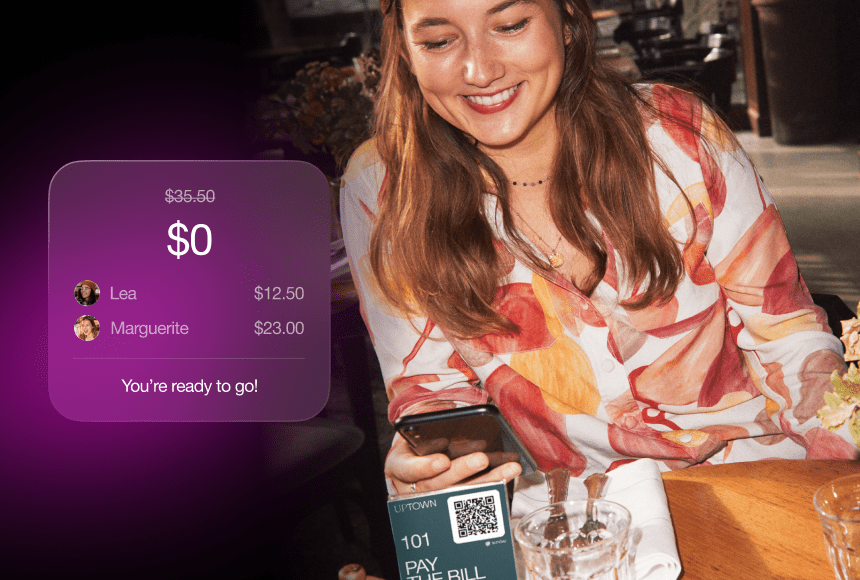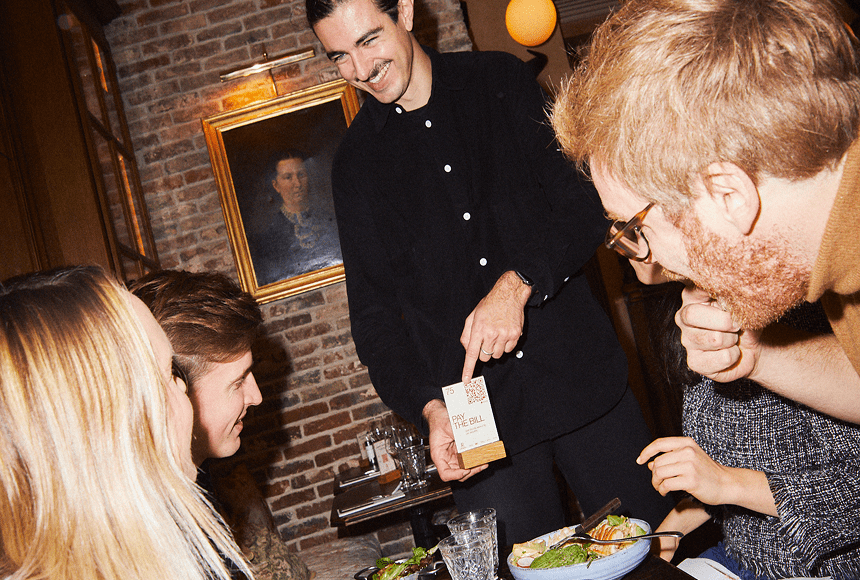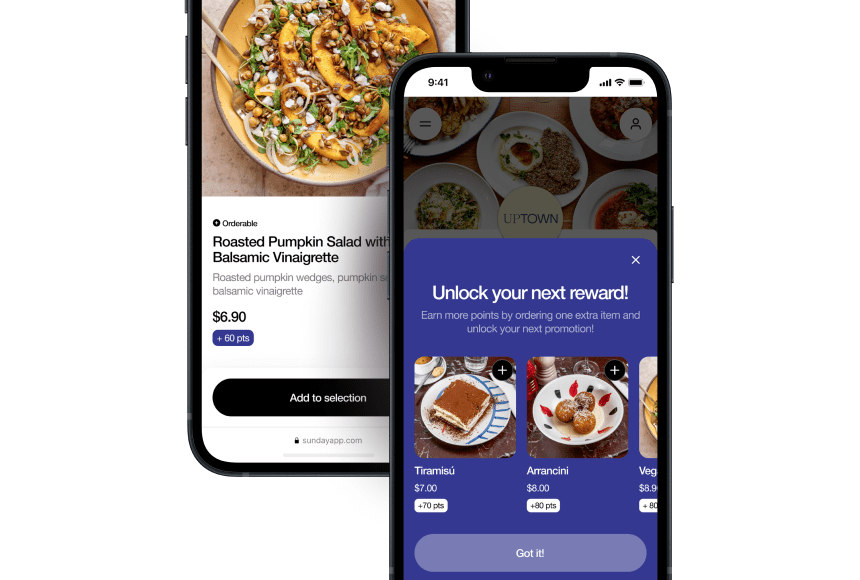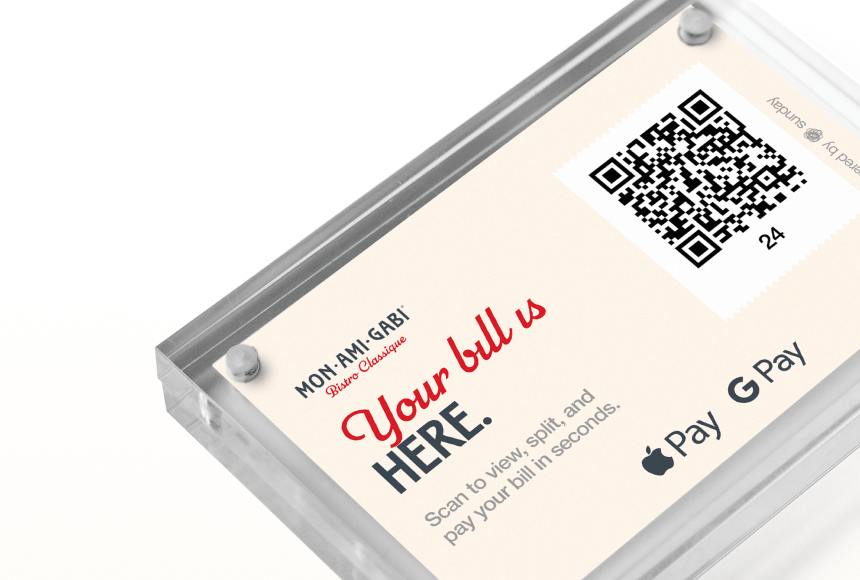
Are You Making These Common QR Code Payment Errors in Your Restaurant?
A Quick Look at Why QR Codes Are Dominating Dining
In the not-so-distant past, the idea of using a phone to pay for your meal might have seemed futuristic or even a bit unnecessary. Cash and traditional card readers were the tried-and-true methods. But today, the restaurant industry is witnessing a massive shift, driven by changing consumer expectations and the desire for frictionless dining experiences.
QR codes—those little black-and-white squares that diners scan with their smartphones—are at the forefront of this change. According to a 2022 National Restaurant Association report, nearly 70% of consumers favored restaurants that offered contactless payment options, including QR codes. It’s a number that’s been trending upward consistently, especially since the global push for safer, socially distanced service.
So, what’s the big deal with these pixelated squares? For diners, scanning a QR code to pay means no waiting for the server to bring the card reader, no rummaging for cash, and no lines at the register. It’s a quick tap, tip, and you’re on your way. For restaurant owners, QR code payments represent faster table turnover, better staff efficiency, and modern brand appeal. When done right, the impact can be huge—both on your bottom line and on the quality of your guest experience.
But not every restaurant gets QR code payment right. As a solution that promises simplicity, QR codes can also cause new headaches if they’re poorly implemented. From hard-to-read codes and slow-loading pages to security concerns and confusing processes, these pitfalls can sabotage the convenience you want to offer. Let’s explore the most common mistakes in QR code payment implementation and how to fix them.
Mistake #1: Using Low-Visibility or Poorly Placed QR Codes
Ever walked into a restaurant, found your table… and then spent the next few minutes searching high and low for the QR code to pay, only to discover it was hidden underneath a ketchup bottle or printed at a size smaller than a postage stamp? Visibility matters, especially when you want customers to switch from old habits to a new way of settling their bill.
Restaurants frequently underestimate the importance of clear placement. A QR code that’s stuck awkwardly to the bottom corner of a menu—or slapped near the edges of the table in a font so tiny it’s borderline illegible—only frustrates diners. When frustrated, diners either abandon the attempt to pay digitally or call a server for the traditional card reader. Both outcomes defeat the purpose of having a quick, easy, contactless solution.
In a busy dining room, you want to guide every guest experience. Think of it like plating a signature dish: you wouldn’t hide your best elements under a garnish. Likewise, a QR code should stand out without overwhelming your table décor. Position it at eye level if you use tabletop displays, or place a clearly marked sticker right where your diners naturally look—perhaps near the top of the check presenter or next to the menu item list. Choose high-contrast colors and an adequate size, ensuring the code scans instantly. Some restaurants even incorporate creative design elements around the code to draw attention without losing function.
Mistake #2: Linking to Clunky or Slow-Loading Payment Pages
A great QR code is one that instantly whisks your guests to a clean, easy-to-use payment page. Unfortunately, many restaurants link their perfectly functional QR codes to payment portals that are anything but intuitive. Slow load times, endless fields to fill out, unnecessary pop-ups—these roadblocks can frustrate the busiest of diners and kill the convenience factor.
Your goal is to make paying as seamless as biting into a warm dinner roll. Once the code is scanned, the page should load quickly, especially on mobile devices. This isn’t just about pleasing the tech-savvy crowd; everyone appreciates a smooth user experience. According to a Forbes insight, 53% of mobile users will abandon a site that takes more than three seconds to load. If your payment page still isn’t up by then, you risk losing not just that potential tip but the customer’s goodwill.
A well-optimized page also ensures that your restaurant brand shines. If your site is confusing or loaded with ads—or if it prompts diners to download extra apps they don’t want—your establishment comes off as disorganized. In contrast, a clean interface with large, clear buttons for payment amount, tip suggestion, and confirm-to-pay fosters trust. Remember, diners just finished a meal at your place: the last thing they want is to get stuck in the digital equivalent of a slow-moving checkout line.
Mistake #3: Overlooking Tip-Friendly Design
Leaving a tip shouldn’t be an afterthought. In the United States, tipping is a cultural norm, and ensuring a good tip is part of what motivates many servers to go the extra mile. But if your digital payment system buries the tipping option, or worse yet, leaves it out entirely, you might be missing out on a major financial boost for both your staff and your restaurant’s reputation.
It’s best to keep tipping suggestions front and center, ideally with a few recommended percentages (e.g., 15%, 18%, 20%) or a custom tip field. Make it a simple step, not a separate process. In many cases, the easier it is to add a tip, the more likely diners are to give one. By contrast, burying the tip function at the bottom of the screen or forcing diners to navigate additional layers might discourage a tip or result in a lower amount.
The psychology is straightforward: when you make an action simple and socially accepted, people tend to follow suit. Your staff, in turn, feels valued, which can lift morale and reduce turnover. So, treat tipping like that secret ingredient in a recipe—it needs to be highlighted and well-integrated into the overall experience, rather than tagged on at the end.
Mistake #4: Taking a One-Size-Fits-All Approach to Your QR Display
QR codes are versatile, but that doesn’t mean one style works for every restaurant setting. The size, shape, and design of your QR payment code should reflect your restaurant’s ambiance and how your guests interact with your space. For instance, in a formal dining setting, you might prefer a discreet table tent with an elegant design that aligns with the restaurant’s aesthetic. In a fast-casual environment, a bright, eye-catching sticker at the edge of the table might be more appropriate.
Customization here isn’t just about visuals—it’s also about practicality. High-traffic areas like bar tops or communal tables might call for more durable displays. Meanwhile, outdoor patios could require waterproof QR codes or signage that won’t fade under the sun. Don’t forget accessibility. If you have guests with vision impairments, consider offering large-print versions or staff assistance to ensure that everyone can make use of digital payment.
Just like you wouldn’t serve soup in a dessert bowl, choosing the right presentation for your QR code ensures it fits naturally into your restaurant’s workflow and aesthetics. It demonstrates respect for your guests’ time and comfort. And when you give people what they expect—plus a little extra convenience—they’ll remember it during their next reservation.
Mistake #5: Missing Opportunities to Enhance the Dining Experience
Too many operators treat QR codes as a purely transactional tool—something you scan, pay, done. Yet QR codes can do so much more if you broaden your perspective. Beyond the payment page, consider offering digital menus, special promotions, loyalty sign-ups, even direct links to your restaurant’s online community or social media pages.
Imagine a scenario: a guest scans the code, pays the bill, and is immediately prompted to leave a quick Google review. That’s a win for your online reputation. Or perhaps they can view a short video message from the chef, highlighting the local sourcing of ingredients for that day’s special. These small touches turn a simple payment action into a deeper bond between the guest and your brand.
When you treat your QR code as an extension of your restaurant’s personality, you transform a routine step into a memorable moment. But remember, keep it optional and user-friendly. If diners feel bombarded by sponsor ads or forced sign-ups, you’ll negate the convenience factor you worked so hard to achieve.
Why Proper QR Code Payments Boost Your Bottom Line
It’s easy to see QR code payment as a convenience for diners, but the real benefits for restaurants run far deeper. By streamlining the payment process, you free up staff to manage more tables and give them more time to engage with guests on hospitality rather than administrative tasks.
On the financial end, faster checkouts can reduce the average dining duration, which leads to quicker table turnover. More seats become available sooner, meaning you can serve more guests, especially during busy hours. Meanwhile, a transparent payment flow—including a well-placed tip suggestion—can enhance overall tip revenue. And when diners consistently leave happier because they didn’t have to chase down anyone for the check, your online reviews often reflect that higher level of satisfaction, attracting new customers.
Think of a restaurant that’s operating at peak dinner rush: all tables are occupied, guests are in a good mood, and your servers are hustling. Instead of an overworked team running around with card readers, your staff can direct attention to a personal touch—refilling water glasses, sharing the story behind the day’s signature dish—because several tables have already settled up via QR code. That’s the operational flow you want: technology handling mechanical tasks so humans can focus on hospitality.
Securing the Payment Process: A Non-Negotiable Priority
Any conversation about digital payments must address security. Online fraud remains a concern, and restaurant owners have a responsibility to protect their customers’ payment data. Fortunately, reputable QR code payment systems come with built-in security features, including encryption and tokenization. This ensures that the rate of exposure to malicious activity is minimal compared to traditional mag-stripe credit card transactions.
Still, it’s crucial to vet your solutions thoroughly. Make sure you partner with a recognized payment platform that complies with industry standards, like PCI DSS (Payment Card Industry Data Security Standard). You should also check how data is stored and whether the service provider offers regular software updates and security patches. If you’re integrating loyalty programs or storing repeat customer profiles, clarity on how that data is safeguarded—both for your peace of mind and the guests’—is essential.
Yes, the convenience of QR code payments is alluring, but never forget: a breach of trust can sting much longer than a clunky checkout flow. So, invest in a robust, well-reviewed system for your QR code payments. Reinforce that commitment to security whenever you can in your staff training and guest communications.
The Human Touch: Blending Technology and Personal Service
There’s a common fear in the hospitality industry that digital solutions might erode the personal interactions many diners treasure. But the truth is, QR code payments can free your servers to spend more time on meaningful connections rather than menial tasks. That’s a win for everyone.
For instance, instead of juggling multiple card readers at once, your staff can engage in genuine conversation, recommend dessert wine pairings, or learn a bit about each guest’s preferences. It feels more like hosting friends in your home rather than performing an assembly line of transactions. The technology handles all the heaviness of payments, splits the bill automatically if needed, and tallies up tips.
What if a diner has questions or needs assistance with scanning? That’s another chance for your staff to provide a memorable, helpful moment. Picture a server guiding an older couple through the QR code process with a warm, patient approach. Those guests not only pay quickly, but they leave with a delighted smile and a renewed sense of comfort with modern technology.
Practical Tips to Make QR Code Payment Work Smoothly
Below are some best practices many restaurants overlook. Each can be implemented with relative ease and can yield considerable returns in terms of guest satisfaction and revenue:
- Use High-Quality Printing: Blurry codes or low-contrast backgrounds can make scanning a nightmare. Invest in clear, high-resolution prints or displays.
- Check Barcode Size: Ensure the code is large enough for a quick scan. Ideally, your code size should be at least 1 x 1 inch, though larger is often better.
- Test Across Devices: Different smartphones, different scanning capabilities. Always test on iOS and Android platforms to confirm compatibility.
- Track Scan Metrics: Some payment platforms let you see how often codes are scanned. Analyzing this data helps you spot usage dips or potential issues.
- Offer a Plan B: Keep a backup digital payment option or a traditional card reader handy. Tech glitches can happen, so reassure your diners you’ve got them covered.
- Staff Training is Key: Make sure everyone on your team knows how the QR payment process works. They should be able to assist diners and troubleshoot basic issues.
With these precautions and improvements in place, you’ll be poised to offer a streamlined experience that marries efficiency with hospitality—two factors diners will always appreciate.
How sunday Enhances QR Code Payments
If you’re considering how to level up your contactless payments, sunday offers a streamlined QR-based payment solution tailored for restaurants. Beyond just scanning and paying, it allows customers to:
- Split the bill seamlessly with friends or family, no server assistance needed.
- Leave a tip with a single tap, at a percentage they choose.
- Post a Google review in seconds, right from their phone, which can boost your online presence.
Because sunday was created by restaurant people who understand hospitality and technology, it’s designed to integrate cleanly into your existing service flow. It helps you serve more tables more efficiently, all while preserving that personal spark between diners and staff. The result is a tool that doesn’t just process payments; it elevates the entire dining experience.
Of course, the real litmus test is seeing how your team adapts. With sunday, staff can focus on giving you that warm, personable touch, even when the restaurant is buzzing at peak hours. Guests get a hassle-free bill payment process and are more likely to leave that well-deserved tip.
Case Study: The Neighborhood Bistro That Got It Right
Let’s look at a hypothetical yet common scenario. A local bistro, Madeleine’s Kitchen, decided to switch from traditional card readers to QR code payments to reduce long waits for the bill. Initially, they stuck small codes on each table. Over time, they realized the codes weren’t easy to scan because of poor lighting at dinner service. Guests would often fumble with their phones, eventually calling for a server to bring the handheld payment terminal anyway.
After re-evaluating their approach, Madeleine’s Kitchen printed larger, high-contrast codes and placed them in elegantly designed table tents. They also worked with a QR code payment provider that loaded instantly, featured clear tipping prompts, and allowed quick bill splitting. On top of that, they added a short message that read, “Thank you for dining with us! Scan to pay and leave a review if you had a great time.”
Within a month, they saw a 30% decrease in average time diners spent waiting to pay, a noticeable lift in server tips, and a spike in positive online reviews. Staff, meanwhile, reported that they could dedicate more energy to upselling dessert and interacting with guests. The new system had turned what used to be a frustrating end-of-meal chore into a quick, meaningful step that even fostered more satisfied smiles on the way out the door.
When Guests Resist: Addressing Common Complaints
Change can be uncomfortable, especially for diners unfamiliar with digital payment methods. You might hear worries like, “Is it safe to pay this way?” or “I don’t trust scanning random codes.” Some older guests may feel intimidated by a phone-based process. Rather than dismiss these concerns, address them proactively:
- Train Staff to Guide: Your servers should be ready to walk anyone through the steps gently, patiently, and confidently.
- Highlight Security: Post a brief statement on the payment page about data encryption and secure transactions. This visibility can ease worries.
- Offer Alternatives: Always let guests know they can pay by traditional methods if they prefer. Choice is key to keeping everyone at ease.
- Display Affirmations: Some restaurants place small text near the QR code: “Powered by a trusted, secure payment platform.” This can calm fears.
If you handle objections with empathy, you won’t alienate technology-averse customers. Instead, you’ll be seen as a restaurant that balances modern convenience with genuine hospitality, building trust for future visits.
Where Do You Go from Here?
The path to efficient, guest-friendly QR code adoption requires thought, planning, and ongoing refinement. Start by examining your current setup. Is your QR code easily visible? Does your payment page load quickly and prompt a tip in a courteous way? Are you mixing in brand-building opportunities like direct links to your online review pages?
The payoff for doing QR code payment right can be significant: streamlined operations, happier staff, and diners who feel in control of their own checkout experience. And remember, it’s not just about technology. This shift frees you to focus on what truly sets your restaurant apart—fantastic food, a welcoming vibe, and personal connections with those who walk through your doors.
Use your creativity to blend practical efficiency with the warmth your guests deserve. From improved staff morale to higher tips and stronger brand loyalty, the potential upsides are too attractive to ignore. If you’re still on the fence, observe how quickly consumers’ interest in contactless payment options continues to surge—it might just be the surest sign that QR code payments are here to stay.
Frequently Asked Questions
Is QR code payment safe and secure for diners?
Yes. Most established QR code payment providers adhere to strict security protocols, including encryption and compliance with PCI DSS standards. You should, however, verify that your chosen provider offers robust protection and regular security updates to safeguard guest transactions.
How do I handle customers who are unfamiliar with QR code payments?
First, offer alternatives. Let them know they can still pay by cash or card if they prefer. Train your staff to step in and guide anyone new to scanning and paying via QR. A simple, polite explanation can go a long way in converting doubtful customers into fans.
Will QR code payments reduce my servers’ tips?
On the contrary, if you design your payment page wisely—displaying tip options front and center—servers often see an increase in gratuities. QR code payments streamline the process, making diners more likely to leave a tip out of convenience and satisfaction.
What if my internet goes down? Do I lose the ability to process payments?
It’s good practice to keep an alternative payment method on hand, like a backup mobile payment device or a fixed payment terminal. That way, if the internet fails, you can still handle transactions and keep customers moving.
How can I incorporate reviews and feedback in the QR code process?
After the payment is confirmed, your page can redirect customers to a brief survey or a link to post a Google review. Keep it optional and quick. By making the feedback loop seamless, you’ll likely gather more positive testimonials.
Find out more today
Drop us your details below and we’ll reach out within the next 24h
“Check please” is a thing of the past.
With our integrated QR codes your customers pay in seconds, straight from their table.




